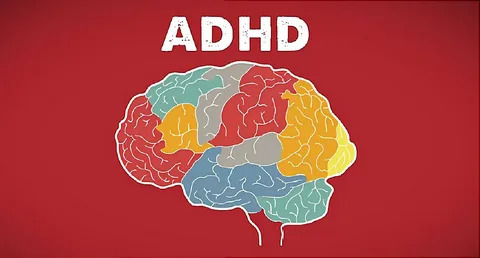
The neurodevelopmental disorder known as Attention Deficit Hyperactivity Disorder (ADHD) is typified by impulsivity, hyperactivity, and inattention. Although ADHD affects people of all genders, research indicates that the disorder’s symptoms and diagnosis differ noticeably depending on the gender. In this piece, we investigate the gender variations in ADHD, looking at the distinct difficulties that men and women encounter as well as the implications for diagnosis, care, and support.
Disparities in ADHD Symptoms by Gender
Males and girls with ADHD exhibit ADHD symptoms in diverse ways, including differences in symptom presentation, severity, and related traits.
Presentation of Symptoms
Males with ADHD are more likely to have externalizing symptoms, like impulsivity and hyperactivity, which are more obvious and could result in an earlier diagnosis and course of treatment. Academic performance and social interactions may be hampered by their disruptive tendencies, which include fidgeting, interrupting others, and talking too much.
On the other hand, internalizing symptoms including inattention and emotional dysregulation are more common in females with ADHD. They might have trouble staying focused, being disorganized, and having trouble remembering things, which might lead to poor academic performance or trouble finishing assignments. Furthermore, internalizing their symptoms can cause anxiety, low self-esteem, and feelings of inadequacy in females with ADHD.
Related Features
The related traits and concomitant disorders of ADHD also exhibit gender disparities. Comorbid illnesses like conduct disorder (CD) and oppositional defiant disorder (ODD), which are marked by antisocial and defiant behaviors, are more common in men with ADHD. They might partake in risky activities that could seriously affect their long-term results, such drug misuse or careless driving.
On the other hand, comorbid problems like anxiety disorders or depression are more common in females with ADHD. They might internalize their feelings and symptoms, which could result in depressive symptoms, self-doubt, and social disengagement. Furthermore, emotional dysregulation symptoms such as mood swings, increased sensitivity to criticism, and trouble regulating stress can be seen in females with ADHD.
Differences in Diagnosis
Disparities in diagnosis and recognition of ADHD symptoms between genders are partly due to differences in how symptoms present and are linked with each gender.
Female Underdiagnosis
Because of the unusual way in which their symptoms show, females with ADHD are frequently misdiagnosed or underdiagnosed. Their internalizing symptoms could go unnoticed or be mistaken for other things, such cultural pressures or hormone fluctuations. Further confusing the diagnosis, females with ADHD may often acquire compensatory mechanisms like perfectionism or social conformity to disguise their symptoms.
Because of this, females with ADHD might not receive support and intervention in a timely manner, which could result in emotional suffering, poor academic performance, and problems forming and maintaining connections with others. It is necessary to raise awareness among educators and healthcare professionals about the underdiagnosis of ADHD in females and to implement comprehensive diagnostic methods that take gender-specific symptoms of the condition into account.
Male Overdiagnosis
On the other hand, because their symptoms are more obvious, men with ADHD may receive an excessive number of diagnoses or be overrepresented in clinical settings. Parents, teachers, and healthcare professionals may become aware of their externalizing tendencies and become concerned, which could lead to an early evaluation and intervention.
For guys with ADHD, early identification and intervention are critical, but it’s also critical to avoid pathologizing normal childhood behaviors or mistakenly linking developmental difficulties to the illness. Males who are overdiagnosed with ADHD run the risk of needless medicalization, social stigma, and dependence on pharmaceutical treatments that ignore underlying environmental or psychosocial issues.
repercussions for support and treatment
The treatment approaches and support tactics that are customized to meet the specific needs of males and females with ADHD are significantly impacted by the gender distinctions in the disorder.
Methods of Therapy
A multidisciplinary approach is necessary for the effective treatment of ADHD, taking into account the disorder’s basic symptoms as well as any accompanying deficits and concomitant conditions. Interventions for males with ADHD may center on pharmacological therapies to address hyperactivity, impulsivity, and externalizing tendencies, as well as behavioral management strategies and academic modifications.
On the other hand, therapies focusing on emotional control, self-esteem, and executive functioning abilities may be advantageous for females with ADHD. Females with ADHD who receive cognitive-behavioral treatment (CBT) can learn coping mechanisms to deal with their inattention, disorganization, and emotional dysregulation. Furthermore, psychoeducation and support groups can offer girls with ADHD a safe space to talk about their struggles and get advice from others going through a similar situation.
Assistive Techniques
It takes supportive surroundings for people with ADHD to succeed academically, socially, and emotionally. Teachers, parents, and medical professionals are essential in fostering inclusive settings that meet the various needs of people with ADHD of all genders.
Supportive environments for males with ADHD could include well-defined routines, explicit expectations, and techniques for positive reinforcement to control impulsivity and hyperactivity. To encourage self-control and academic performance, educators and caregivers might use behavior management strategies like token economies or daily report cards.
Supportive environments for females with ADHD might prioritize on resilience, self-worth, and emotional health. By giving girls with ADHD the chance to practice social skills, assertiveness, and self-advocacy, educators and caregivers can help them feel less alone and foster strong peer interactions.
In summary
For an accurate diagnosis, successful treatment, and supportive interventions that cater to the particular requirements of both males and females with the illness, it is imperative to comprehend the gender variations in ADHD. Healthcare professionals, educators, and caregivers can empower persons with ADHD to achieve their full potential by offering customized assistance and resources, taking into account the different symptoms of ADHD that differ between genders. Increasing understanding of gender-specific issues and differences in ADHD can also aid in lowering stigma, encouraging early intervention, and enhancing results for people of both genders.


